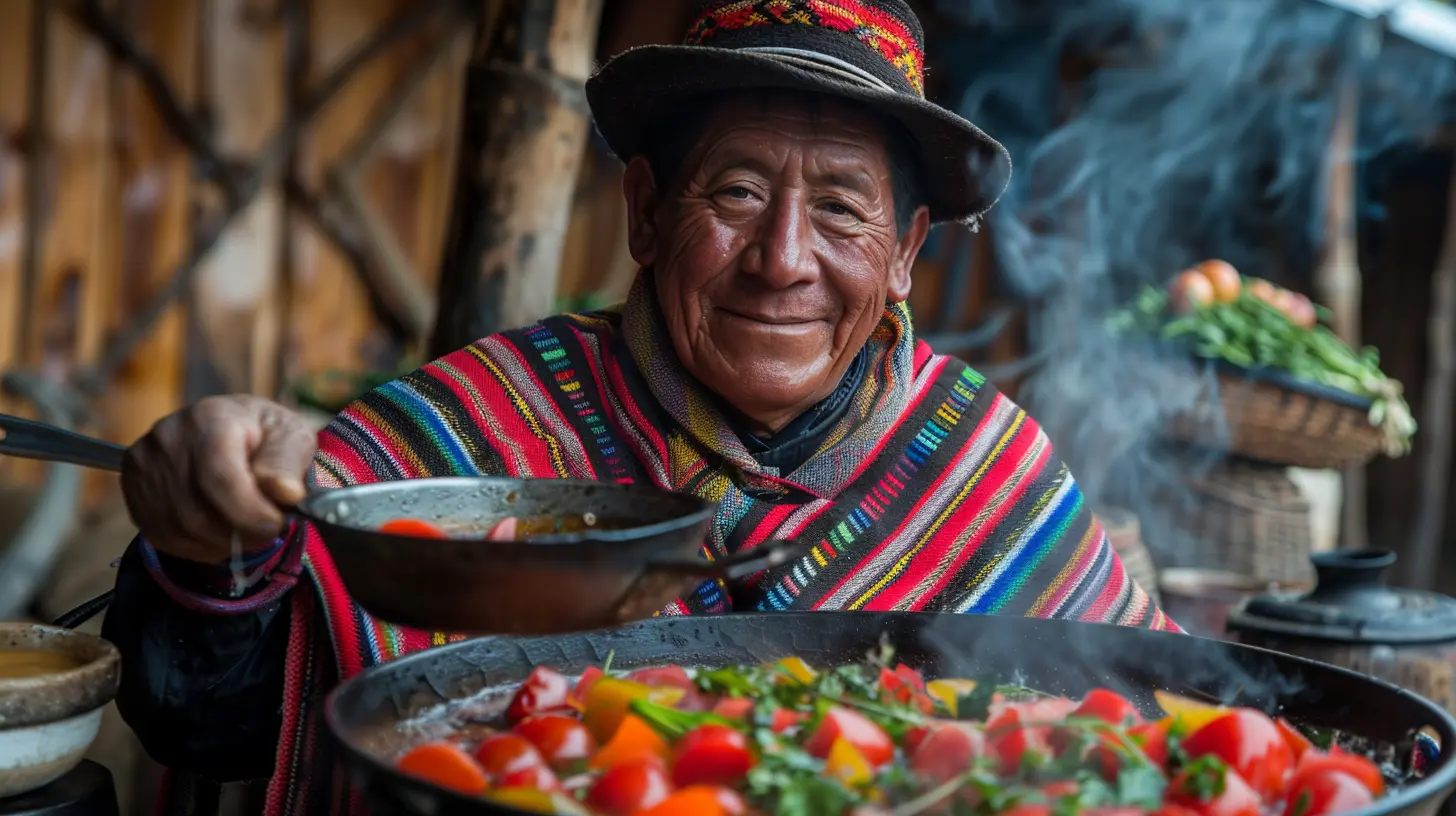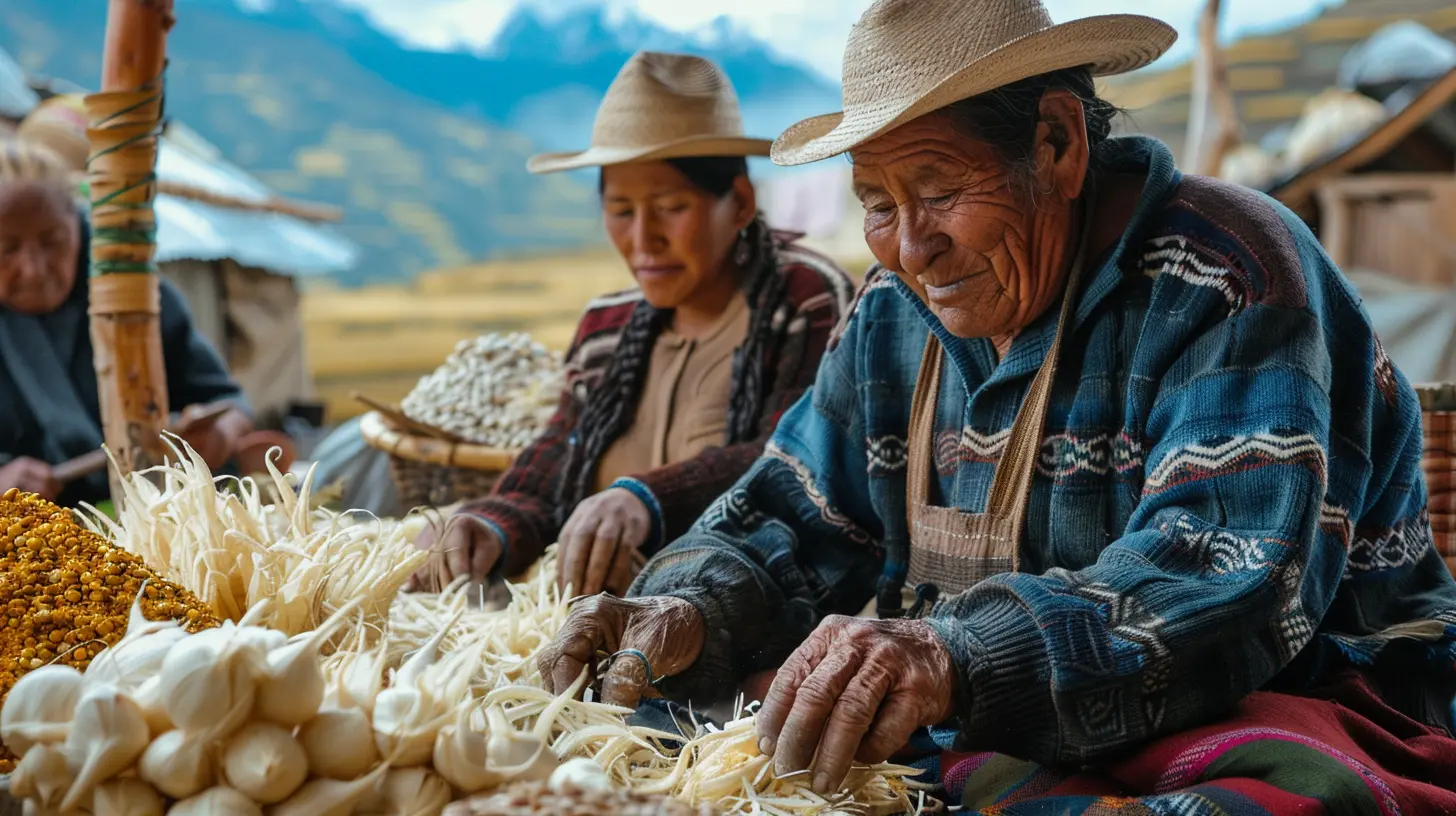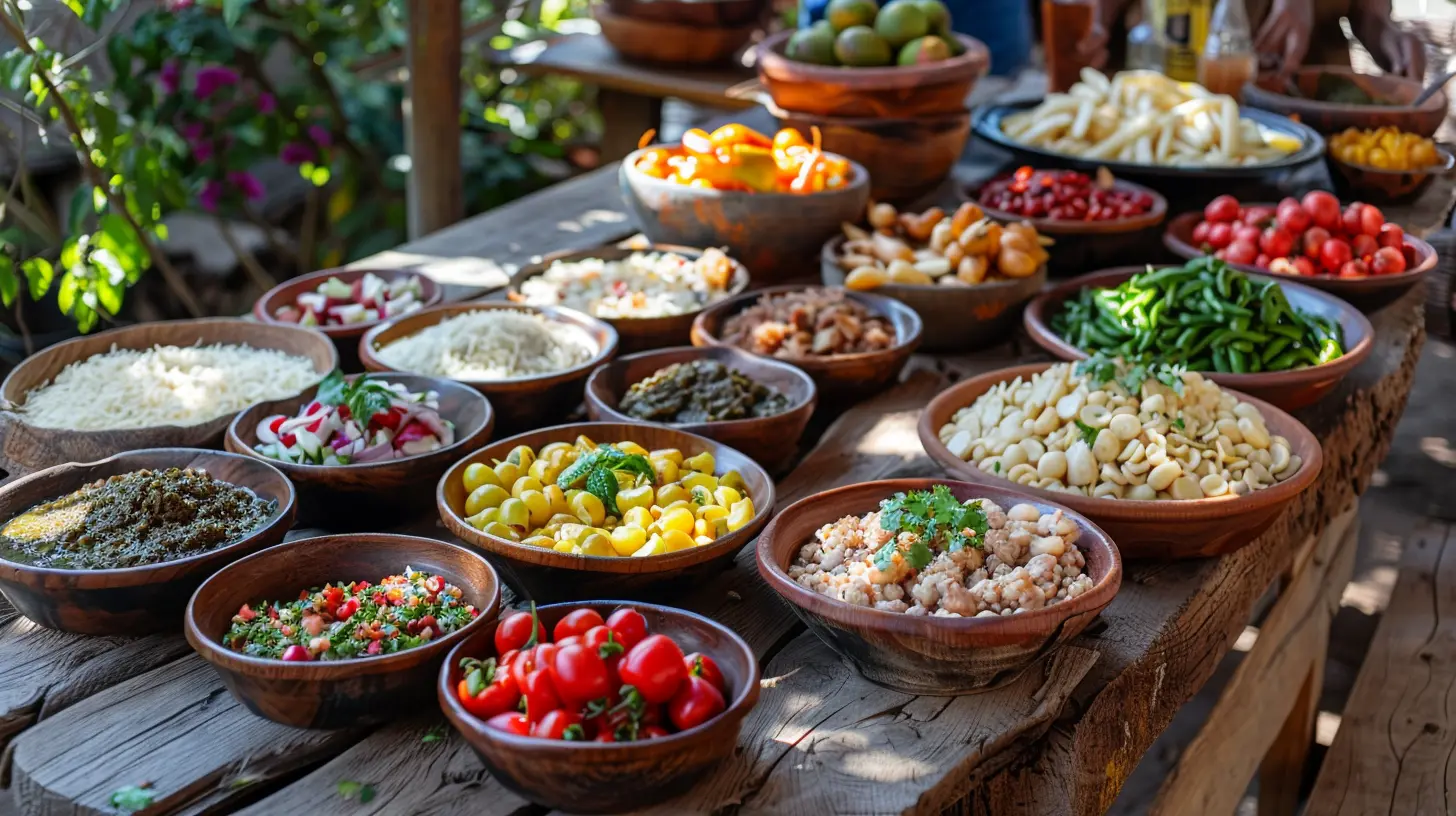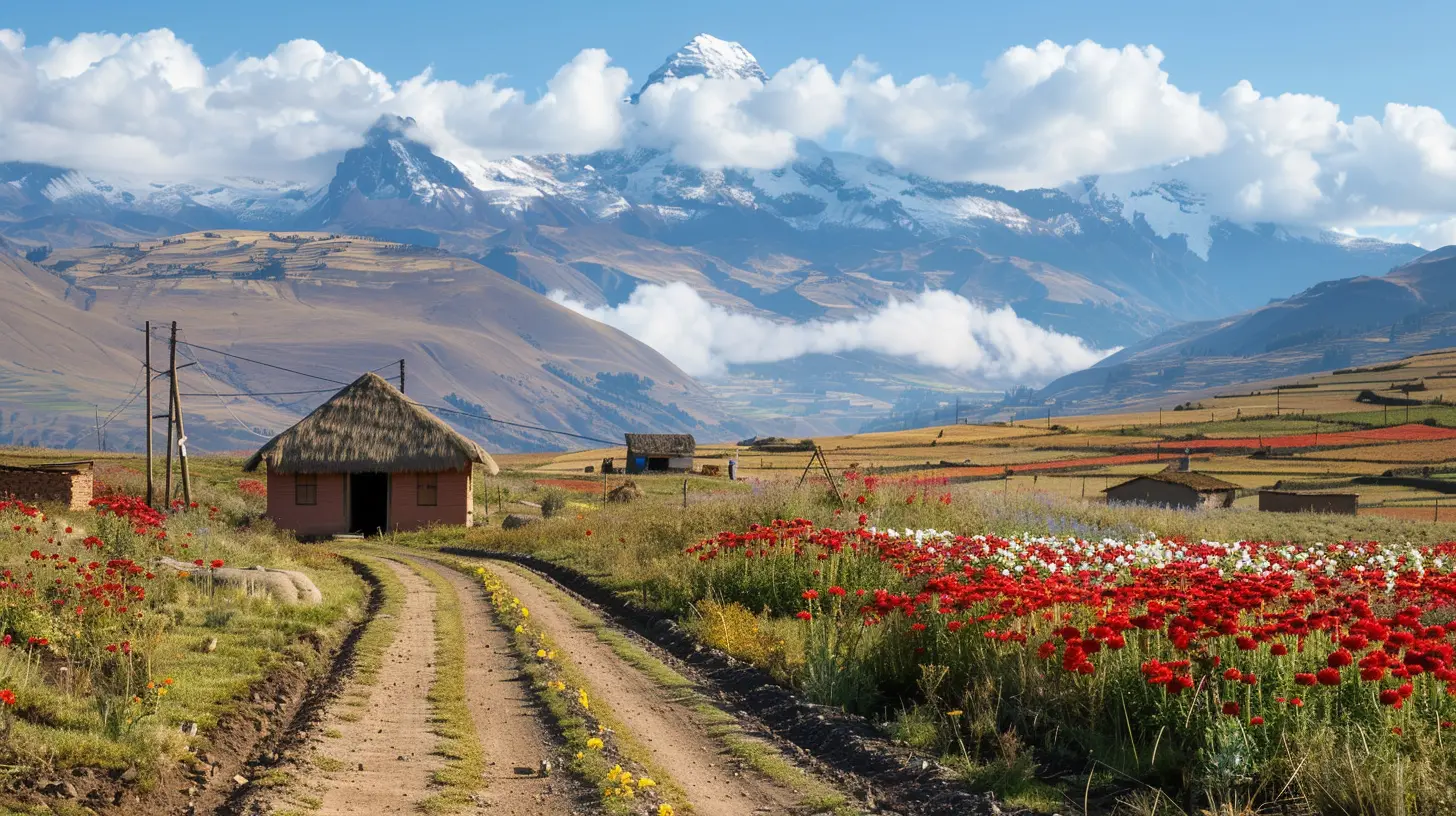From the Heart of the Andes: Bolivian Culinary Traditions
6 July 2025
When you think of the Andes, majestic mountains, ancient ruins, and mystical valleys might pop into your head. But if we zoom in a little closer—into the kitchens, marketplaces, and family dining tables—you’ll find something equally rich: Bolivian culinary traditions. These aren’t just meals—they're age-old stories passed down through generations, stirred into pots, tucked into pastries, and simmered in spices you probably haven’t even heard of yet.
In this blog, we're going to take a deep dive into the flavors, ingredients, and cultural significance of Bolivia's cuisine. Whether you're a foodie with a passport or just a hungry soul dreaming from your couch, you're in for a mouthwatering ride.
What Makes Bolivian Cuisine Unique?
Let’s start with the basics. Bolivia isn't just one big flavor. It’s a mosaic of microclimates, cultures, and histories. From the chilly altiplano plateau to the steamy Amazon basin and everything in between, every region puts its own spin on what's cooked and how it’s served.Aymara and Quechua traditions meet Spanish colonial influences here, resulting in a food culture that’s both ancient and boldly creative. Bolivian cuisine is rooted in the land, shaped by indigenous practices, and enriched with a splash of European flair. That means plenty of corn, potatoes, chili peppers, quinoa, fresh cheese, and tropical fruits.
Ever heard of chuño (freeze-dried potatoes), or tasted mocochinchi (a spiced peach drink)? Nope? Well, get ready—because the flavors of Bolivia are anything but average.
The Staples: Building Blocks of Bolivian Meals
Before we get into the showstoppers, let’s look at the unsung heroes—the ingredients that set the stage. They're earthy, humble, and power-packed.1. Potatoes (Papas)
Bolivia is home to over 4,000 varieties of potatoes. No, that’s not a typo. From tiny purple ones to massive golden tubers, potatoes are everywhere. They’re boiled, mashed, fried, or turned into chuño (a freeze-dried version that dates back to Inca times).2. Corn (Maíz)
Corn is more than just a side dish—it comes in a rainbow of colors and is used to make everything from beverages like chicha to hearty tamales called humintas.3. Quinoa
Long before it was cool in health food stores, quinoa was sacred to the Andean people. It’s a nutritional powerhouse grown in the high-altitude plains and often cooked into soups, stews, or mixed with vegetables.4. Meats: Llama and Alpaca
Forget beef for a second. In Bolivia, llama and alpaca meat are important sources of protein—lean, flavorful, and sustainable. It's often sun-dried into charque, which you’ll find in many traditional recipes.5. Chili Peppers
Bolivians love heat—but not the burn-your-face-off kind. Their chilies are fragrant, colorful, and add depth without overpowering the dish.
Iconic Bolivian Dishes You Have to Try
Every region has its signature dishes, each one telling you something about the people who live there.Salteñas
Let’s kick things off with a heavy hitter. Salteñas are Bolivia’s answer to the empanada—but calling them just an empanada is like calling a Rolls Royce just a car. These baked pastries are sweet, spicy, and filled with meat stew—juicy enough that you need to eat them carefully (tip: don’t bite straight in or you’ll end up wearing your lunch).Pique Macho
A legend in La Paz and Cochabamba, this is the ultimate challenge food. It’s a mountain of beef, sausage, fries, eggs, peppers, and onions, all smothered in spicy sauces. It’s not for the faint of heart—or stomach. Some say it was invented for drunk guys who dared each other to finish a whole plate. True or not, it’s a must-have.Silpancho
Imagine a crispy, breaded piece of meat (usually beef), laid over rice and boiled potatoes, topped with fried eggs and a fresh salad. That's silpancho—hearty, rich, and deeply satisfying. Cochabambinos swear by it.Sopa de Maní (Peanut Soup)
This one might sound strange, but it’s a national treasure. The peanuts are blended into a velvety broth, enriched with potatoes, vegetables, sometimes pasta, and often garnished with crispy potato sticks on top.Chairo
A soup that warms the soul and then some. It’s made from chuño (remember that freeze-dried potato?) and packed with meat, corn, and vegetables. If you’re cold in the Andes, chairo will fix that real quick.
Bolivia’s Bold Beverages
What’s a tasty meal without something to wash it down? Bolivia's drink game is strong—and wildly intriguing.Chicha
This ancient corn beer has been around since the Incan Empire. It’s tangy, slightly boozy, and deeply traditional. You’ll often spot it being served in colorful plastic buckets at festivals.Mocochinchi
A spiced peach drink that’s perfect for quenching your thirst on a hot day. It’s made with dried peaches, cinnamon, and cloves—like a hug in a glass.Singani
The national spirit of Bolivia. It’s made from Muscat of Alexandria grapes and distilled high in the Andes. Smooth, floral, and perfect in a cocktail called a Chuflay.Street Food: Where Flavor Meets Culture
If you think Bolivia’s food is only about sit-down meals, you’re missing half the magic. The streets here are practically paved with flavor.Anticuchos
Grilled beef heart skewers, marinated in garlic and spices, served with potatoes and a spicy peanut sauce. Sounds intense? It is—in all the right ways.Tucumanas
Fried cousins of the salteña, tucumanas are crispy on the outside and filled with meat, egg, and vegetables. They’re usually sold with a line-up of spicy sauces you can drizzle to your liking.Api con Pastel
Breakfast in Bolivia can be sweet and gloriously indulgent. Api is a thick, warm drink made from purple corn, spiced with cinnamon and cloves. The pastel that comes with it? A deep-fried pastry dusted with sugar. Yes, please.Food and Festivities: The Cultural Connection
In Bolivia, food isn't just nourishment—it’s celebration, identity, and resistance. Traditional meals are deeply tied to festivals, rituals, and religious events.During All Saints Day, families prepare favorite dishes of their departed loved ones to place on altars. Carnival brings out every kind of street snack imaginable. And in rural communities, cooking methods like the "watia" (an underground oven) are not just practical—they’re ceremonial.
Even specific ingredients have symbolic weight. Corn is linked to fertility. Potatoes, considered sacred in ancient times, are still honored in rural rituals.
Cooking Techniques: Ancient Methods Still Alive
You might be surprised how much of Bolivian cooking sticks to traditional methods.- Pachamanca-style cooking: Layers of food are cooked in earth pits, using hot stones for heat.
- Desiccation: Freeze-drying techniques like those used to make chuño or charque date back centuries.
- Fermentation: Beverages like chicha and dishes like tocosh (fermented potato) continue to be made in time-honored ways.
These aren't relics—they’re part of daily life for many Bolivians.
Sustainable Food Culture: A Lesson for the World
Here's something modern food systems could learn from Bolivia: respect for the land, the ingredients, and the people who grow them. Many indigenous communities still practice permaculture and crop rotation, and food is rarely wasted.Markets feature locally grown produce, and home cooking is prioritized over processed goods. It’s a slow food culture by default—but one that’s finally starting to get the global recognition it deserves.
Final Thoughts: Why You Should Care About Bolivian Cuisine
Bolivian culinary traditions are more than just delicious—they’re a link between past and present, between mountain and valley, between celebration and daily life. Every bite tells you something about history, geography, and the soul of a culture that has thrived despite colonization, modernization, and globalization.So the next time you sit down to eat, think of the woman in La Paz selling salteñas with a smile, or the family cooking chairo in a village at 10,000 feet above sea level. That's Bolivian cuisine—from the heart of the Andes.
Want a taste of something real, rooted, and unforgettable? Start here.
all images in this post were generated using AI tools
Category:
Culinary AdventuresAuthor:

Pierre McKinney
Discussion
rate this article
2 comments
Myles Evans
Thank you for this insightful article! It beautifully highlights the rich culinary traditions of Bolivia. I appreciate how it captures the essence of Andean culture through its delicious dishes. Looking forward to exploring these flavors on my next visit!
October 20, 2025 at 4:59 PM

Pierre McKinney
Thank you for your kind words! I'm glad you found it insightful and that it resonated with you. Enjoy your culinary adventures in Bolivia!
Jade Elliott
Thank you for sharing this delightful insight into Bolivian culinary traditions! Your vivid descriptions truly capture the rich flavors and cultural significance of the Andean region. I can’t wait to explore more!
July 10, 2025 at 3:20 PM

Pierre McKinney
Thank you so much for your kind words! I'm thrilled to hear you enjoyed the piece and are inspired to explore more of Bolivia's rich culinary heritage!


